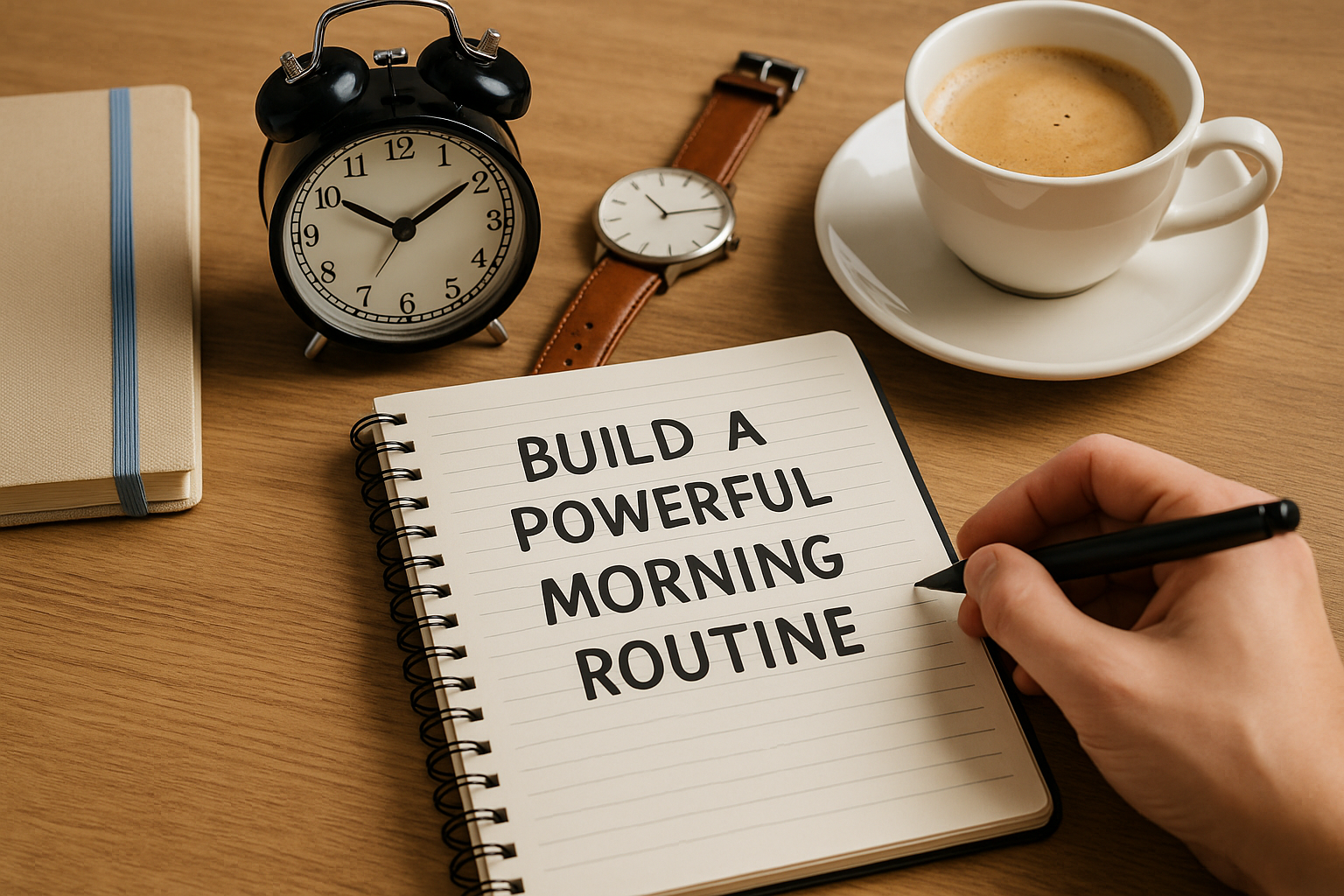Your mornings set the tone for the rest of your day. A chaotic start can lead to stress and disorganization, while a calm and intentional morning routine can fuel productivity, focus, and emotional balance. In this article, you’ll learn how to design a morning routine that supports your personal growth and helps you take control of your time and mindset.
Why Morning Routines Matter
A solid morning routine gives you a sense of structure and purpose. It creates space for reflection, preparation, and grounding before the demands of the world take over. Studies have shown that people who stick to healthy morning routines often experience lower stress levels, improved mental clarity, and greater self-confidence.
Step 1: Define Your Morning Goals
Before designing your routine, consider what you want to achieve in your mornings. Do you want to:
- Start the day with peace and clarity?
- Be more productive?
- Prioritize self-care?
- Work on a personal project?
Your goals will shape the specific actions you include. Clarity leads to consistency.
Step 2: Choose Your Wake-Up Time (And Be Consistent)
You don’t need to wake up at 5 a.m. unless that works for you. The key is waking up at the same time every day to set a natural rhythm for your body and mind. Even on weekends, try to stay within an hour of your usual time.
Pro tip: Start by waking up just 15 minutes earlier than usual and build from there.
Step 3: Begin With Stillness
Instead of diving straight into your phone or emails, take the first few minutes of your day for silence and reflection. This can include:
- Meditation: A 5–10 minute session can calm the mind.
- Deep breathing: Helps center your nervous system.
- Prayer or gratitude practice: Grounds your focus and reminds you of your blessings.
Even two minutes of calm can create a noticeable difference in your mental state.
Step 4: Move Your Body
Physical activity boosts endorphins, increases circulation, and wakes up your entire system. This doesn’t mean a full workout (unless you want one). A few options:
- Gentle yoga or stretching
- A brisk walk around the block
- A short bodyweight workout
- Dancing to your favorite song
Movement clears out sluggishness and gets your mind ready to engage with the day.
Step 5: Nourish Your Body
What you eat first thing can affect your energy, focus, and mood. Aim for a balanced breakfast with protein, fiber, and healthy fats. Avoid sugary foods that cause energy crashes later.
Also, drink water—your body is dehydrated after hours of sleep. A glass of water before coffee can refresh you and improve digestion.
Step 6: Review or Set Your Daily Priorities
Spend 5–10 minutes reviewing your plans for the day or setting your top three priorities. This gives your mind direction and helps you avoid reacting to distractions.
You can use a planner, app, or simple notebook. Ask yourself:
- What are my must-dos today?
- What would make today feel successful?
- What am I most likely to avoid (and how can I tackle it early)?
Step 7: Feed Your Mind
Incorporate a habit that stimulates your intellect or creativity:
- Read a few pages from a book
- Listen to a podcast
- Write in a journal
- Watch a motivational video
Even 10 minutes of intentional mental input can inspire you and increase your learning over time.
Step 8: Avoid Tech for the First 30–60 Minutes
Checking your phone first thing often pulls you into a reactive state—emails, notifications, news, and social media distractions. By delaying tech usage, you protect your attention and start the day on your own terms.
Try placing your phone in another room overnight, or use apps that restrict access to certain features during the first hour after waking.
Sample 60-Minute Morning Routine
Here’s a flexible example to get you started:
- 6:30 a.m. – Wake up and drink a glass of water
- 6:35 a.m. – 5 minutes of meditation or deep breathing
- 6:40 a.m. – Stretch or do light exercise (15 minutes)
- 6:55 a.m. – Eat a healthy breakfast
- 7:10 a.m. – Review your goals and write in your journal
- 7:25 a.m. – Read, listen to a podcast, or do something creative
- 7:40 a.m. – Shower, get dressed, and start your day
Feel free to shorten or expand each part depending on your schedule.
Tips to Stay Consistent
- Prepare the night before: Set out clothes, plan your breakfast, and make a to-do list so your morning feels lighter.
- Start small: Trying to change everything at once often leads to burnout. Focus on one habit at a time.
- Be flexible: Life happens—travel, sickness, or unexpected events may shift your schedule. Don’t aim for perfection, aim for consistency.
- Track your progress: Use a habit tracker or journal to stay motivated.
The Power of Mornings
You don’t need to be a “morning person” to have a powerful morning. You just need to build a routine that aligns with your values, supports your energy, and sets you up for success—whatever that means to you.
Your morning can become a time of quiet victory, where you reconnect with yourself and set a strong foundation for everything that follows. Even just 20–30 intentional minutes each day can create meaningful momentum in your personal life.
